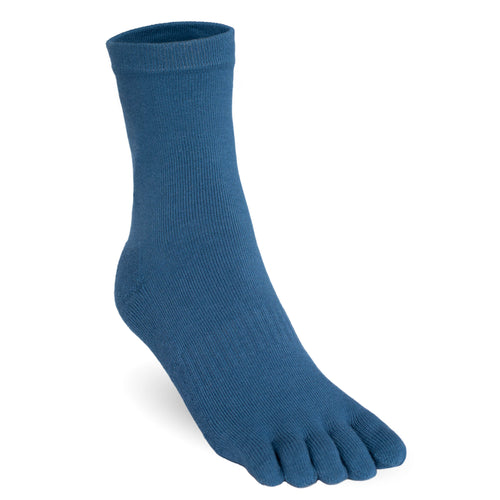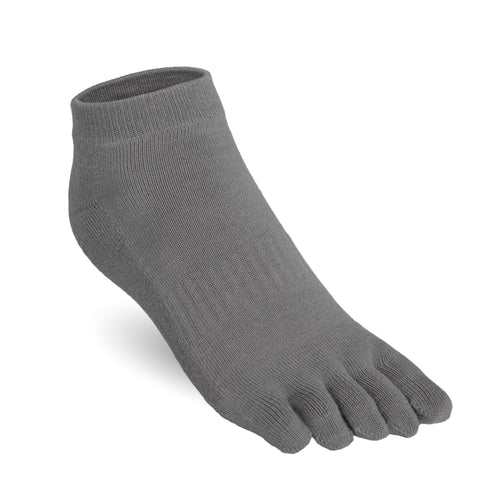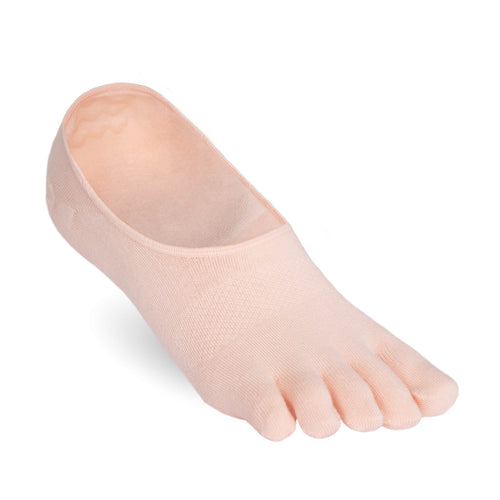Why You Should Hike With Toe Socks
All hikers, from novices to the most seasoned, have a checklist before they hit the trail. After ensuring you have the right gorp and gear, it may seem like everything is in order. But even with the utmost attention paid to securing the best boots and bags, if toe socks aren’t on the list, you’re missing an essential piece of equipment.
You might have dismissed toe socks as a fad, but they’re about function–not fashion. That’s why these odor-reducing socks are becoming a staple of serious hikers on trails worldwide.
Studies show the advantage toe socks can have on posture. And now podiatrists and expert hikers are beginning to extol their virtues as these toe-separating socks spread across the hiking community.
We already know about the mental and physical benefits of hiking. It would be a shame to waste all of those positive advantages with the uncomfortable effects that may come from wearing a traditional pair of socks. Let’s dig into the benefits of toe socks and see why they should be part of your next excursion.
Hiking Toe Socks Prevent Blisters
Blisters happen to every caliber of hiker. You might be thru-hiking the Pacific Crest Trail or simply taking a leisurely day stroll close to home, but blisters can pop up regardless of the trail’s difficulty.
Hikers have long shared tips for avoiding painful blisters, and you’ve likely heard many. Undoubtedly, many of us follow the tradition of slathering our toes in Vaseline, stuffing them in hiking socks, and then shoving them into boots that we lace and tie methodically. But toe socks offer an easier, more efficient answer.
Eliminating Sweat and Friction
Hiking toe socks, also known as barefoot socks, help prevent two of the biggest causes of blisters: sweat and friction. Eliminating these pesky hindrances goes a long way to keeping your feet happy while elevating your physical performance.
Toe socks should be made from moisture-wicking materials like bamboo. Not only does this make the socks odor-absorbing, but it also helps keep the area between your toes dry. Without this excessive sweat, your toes are less likely to rub against each other unnecessarily.
Of course, your toes will inevitably rub together throughout your hike. This friction is why having fabric surrounding each toe is so beneficial. Toe socks cover each toe, minimizing the friction between your skin. Without the sweaty rubbing that can occur during your trek, you significantly reduce the chances of developing painful blisters.
Hiking Toe Socks Unleash Your Foot’s Potential

We put a lot of thought and care into the type of hiking boots we choose. Often, this means finding boots with a roomy toe box that allows our toes a full range of motion. There’s just one problem: typical hiking socks can hinder utilizing this movement.
Since most socks feature elastic materials, they inadvertently push our toes inward and add compression. Not only is this uncomfortable at the moment, but many hikers report that it can lead to long-term effects like bunions.
Because the design of hiking toe socks frees your toes to move naturally, the biomechanics of your feet will be free to take over. Your toes can naturally align inside your boot, producing more energy through their natural movement.
Balance, Flexibility, and Circulation
The ability to fully engage with your toes promotes balance. Other parts of your foot and body won’t have to make up for restrictions placed on your toes, allowing your foot to do its job.
The lack of restriction also helps your foot remain flexible. With each toe free to move without restricting seams, you’ll experience an improved range of motion that helps keep your feet and ankles strong.
And since toe socks don’t compress your feet, you’ll also benefit from improved circulation. Better blood flow will help combat foot swelling, which keeps your feet feeling good while bolstering athletic performance by fighting the fatigue brought on by inflammation.
When you add up the balance, flexibility, and circulation afforded by hiking to socks, it’s easy to see how you’re improving your feet’s performance. And since your feet connect your body to the trail, this is one of the most critical facets of hiking.
Toe Socks are Odor Absorbing
We can all admit that peeling off your socks after a long hike can be a little pungent. Unfortunately, this can take away from the euphoria felt after making it to camp or the trailhead.
Thanks to using moisture-wicking material like bamboo, toe socks absorb odor. Without sweat accumulating, your boots will stay fresher longer. Bamboo’s antibacterial properties and breathability will keep embarrassing smells at bay while you tackle the trail with friends.
Bamboo is also sustainable, making it much better for the environment than many synthetic alternatives. We must do all we can for nature to ensure future generations can enjoy hiking these same paths. This care should extend to all the materials we use on the trail.
Time to Hit the Trail With Hiking Toe Socks
No, toe socks aren’t a gag gift or a fashion trend. Just like toe shoes, they are a valuable piece of equipment that can help your outdoor performance and ensure your comfort.
Socks might not seem as glamorous as a fancy pair of boots or a shiny new pack. However, toe socks can optimize your treks by reducing friction, sweat, odor, and so much more.
With the sustainable materials and practices of Serasox, you get all the benefits of tackling the great outdoors with excellent equipment while knowing that your gear is good for the environment.
Get your first pair of odor-absorbing hiking toe socks from Serasox today and experience more comfort and less odor with environmentally friendly functionality. See why NBC and Fox have featured our socks.





